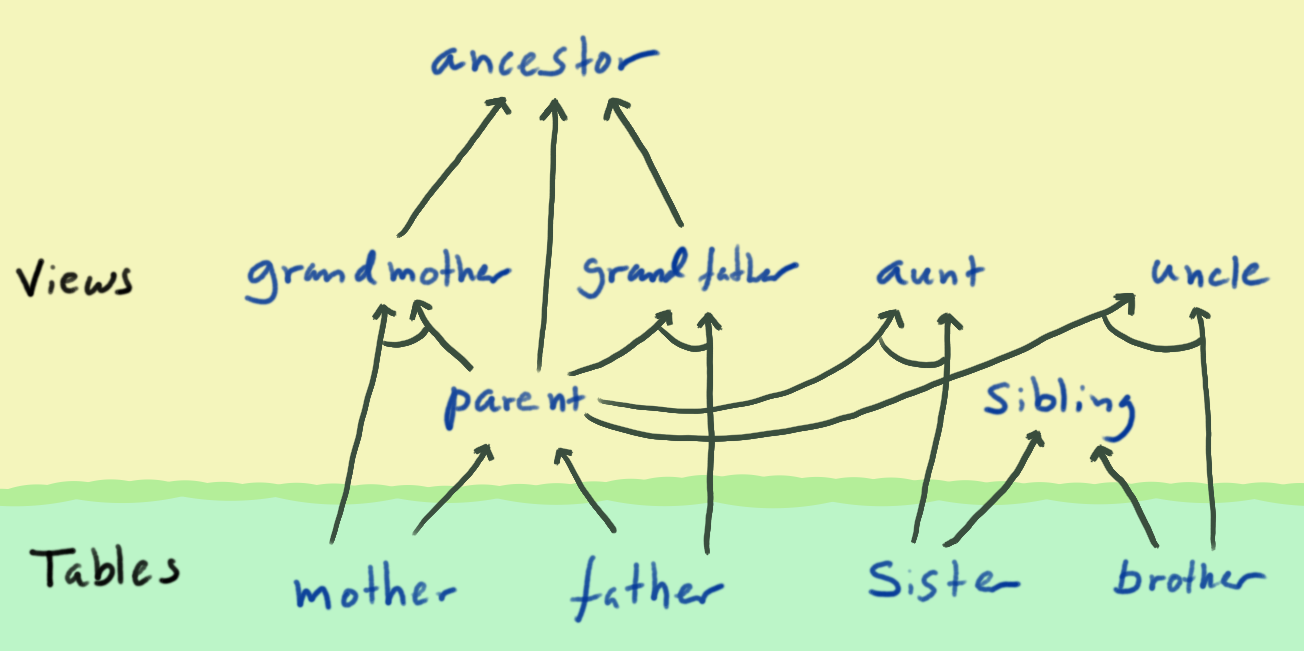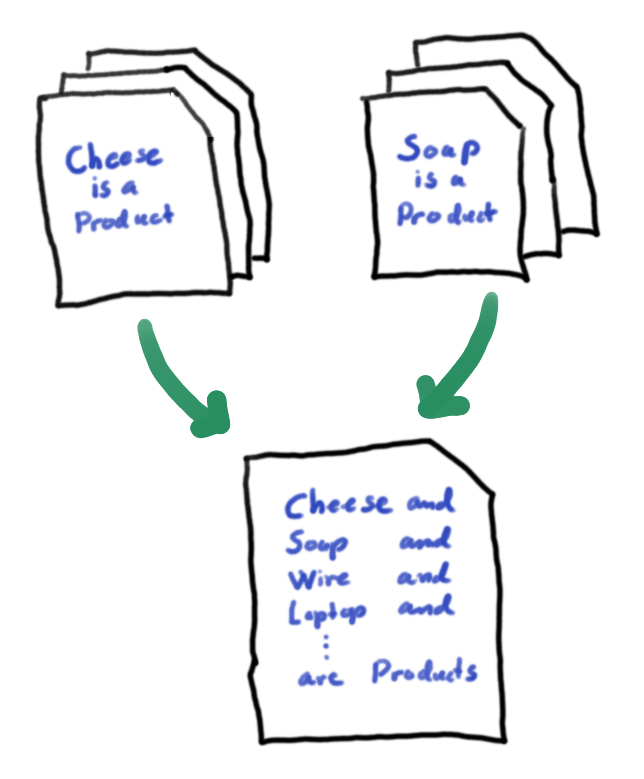person(id, sname) <- student(id, sname); -- backward-chaining rule
person(x, y) <- employee(x, y);
mother(x, y) -> parent(x, y); -- forward-chaining rule
ancestor(x, y), ancestor(y, z) -> ancestor(x, z);
student(sid, sname), takes_course(sid, code, cname) : code >= 4000 AND code <= 6000 -> master_student(sid, sname);
ifi_student(sid, sname) <- student(sid, sname), takes_course(sid, code, cname) : cname LIKE 'IN%';
' || '
' || translation '
' || '
' \/ '
CREATE IMPLICATION person AS
SELECT id, sname FROM student AS t1(id, sname);
CREATE IMPLICATION person AS
SELECT x, y FROM employee AS t1(x, y);
CREATE FORWARD IMPLICATION parent AS
SELECT x, y FROM mother AS t1(x, y);
CREATE FORWARD IMPLICATION ancestor AS
SELECT x, z
FROM ancestor AS t1(x, y)
NATURAL JOIN ancestor AS t2(y, z);
CREATE FORWARD IMPLICATION master_student AS
SELECT sid, sname
FROM student AS t1(sid, sname)
NATURAL JOIN takes_course AS t2(sid, code, cname)
WHERE code >= 4000 AND code <= 6000;
CREATE IMPLICATION ifi_student AS
SELECT sid, sname
FROM student AS t1(sid, sname)
NATURAL JOIN takes_course AS t2(sid, code, cname)
WHERE cname LIKE 'IN%';


